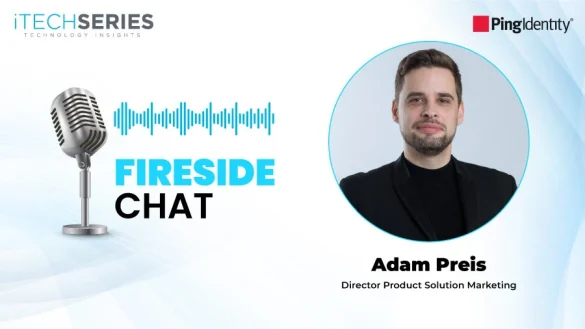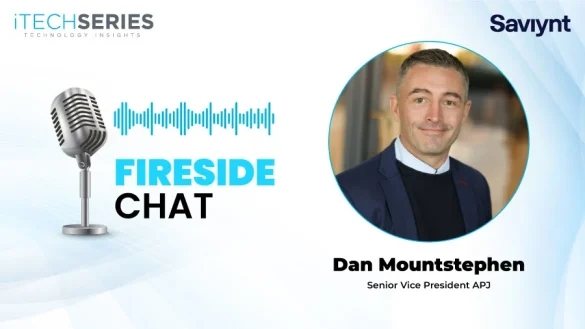Armando Diana, Director of Product Marketing at Fortinet, shares insights on go-to-market strategies, aligning marketing with sales, product value propositions, revenue growth, sales enablement, and more.
Armando, thank you for joining us on this interview series. Could you tell us a bit about yourself and your journey as a product marketer?
I started in sales right out of college, based on great advice from my faculty advisor at the time. He said, “You will become a better marketer if you understand the sales process first.” The six years I spent in sales have been invaluable. It taught me to communicate with the buyer on their terms, not mine. From there, I moved into marketing and have adhered to the lessons I learned in sales. I focus on the buyer persona and what compels them to purchase.
As a product marketing leader, how do you prioritize and communicate product value propositions to different customer segments?
There is nothing more important than the value proposition, except for how it resonates with the target audience. Having a value proposition is useless if it does not solve the customer’s problem. So the value proposition needs to be real and needs to speak to the buyer.
So, it starts with having a deep understanding of the customer. I typically conduct thorough market research to define distinct customer segments based on demographics, psychographics, buyer behaviors, needs, and pain points. From there, I develop a deep understanding of each segment’s unique challenges, goals, and desired outcomes. I next assess the potential value, growth opportunities, and resource requirements of each segment to prioritize focus areas. And that’s when the fun starts. I craft a compelling value proposition for each segment that resonates with their unique needs. A value prop needs to clearly articulate how the solution solves customer problems or improves their lives.
There is nothing more important than the value proposition, except for how it resonates with the target audience. Having a value proposition is useless if it does not solve the customer’s problem. So the value proposition needs to be real and needs to speak to the buyer. And finally, I find the right communication channel that aligns with each segment’s preferences. In this regard, my overriding principle is to deliver the message how and where the buyer wants to receive it. Too often, I see marketers trying to communicate through vehicles they like versus what the decision-maker likes or uses.
“The six years I spent in sales have been invaluable. They taught me to communicate with the buyer on their terms, not mine.”
In a revenue-driven world, how do you view the alignment between product marketing, sales, customer success, and RevOps teams?
The alignment between product marketing, sales, customer success, and RevOps is paramount. These teams are the connective tissue that bridges the gap between product development and customer satisfaction. I view this alignment as a synchronized orchestra where each team plays a critical role in creating a harmonious customer journey and driving revenue growth.
- Product marketing is the composer, providing the foundation by crafting compelling narratives around the product, positioning it effectively in the market, and enabling the sales team with the necessary tools and messaging.
- Sales are the frontline, converting leads into customers by leveraging product marketing’s insights and delivering exceptional customer experiences.
- Customer success ensures customer satisfaction and retention, providing valuable feedback to both product marketing and sales to refine the value proposition and sales process.
- RevOps is the conductor, orchestrating the entire process by optimizing operations, streamlining workflows, and providing data-driven insights to inform strategic decisions.
Ultimately, the success of the revenue organization hinges on the seamless collaboration and shared goals of these teams. When aligned effectively, they can create a flywheel effect where customer satisfaction drives referrals, leading to increased sales and revenue.
Can you describe a strategic go-to-market plan that significantly drove product adoption and revenue growth?
There are numerous campaigns I have run with partners, but one that always seems to deliver the highest ROI is a CIO dinner. We invite 12 to 20 CIOs (or any decision-makers) to a dinner moderated by someone not associated with the partner or vendor. The topic is typically something of interest (digital transformation, AI, etc.). There is no selling in the session. It is meant to be a value-driven event underwritten by the partner. The only mention of the partner is a thank-you to the sponsor at the end of the dinner and on the invitation. There is a sales rep at each table to listen and facilitate discussion. At the start of the dinner, the moderator raises the topic and asks the attendees about the challenges they face. We have dinner, and the moderator returns before dessert to discuss some of the solutions the CIOs have tried.
This campaign is effective for several reasons:
- We hear first-hand from the attendees about their challenges and attempted solutions. A good sales rep listening to this now knows how to approach and position our solution to the attendee
- We build rapport with prospective buyers
- We establish the partner or vendor as a thought leader
- This event has consistently delivered a 5-to-1 ROI ratio
- I can share a white paper for more information
Can you elaborate on the challenges and opportunities you see in driving product adoption and revenue growth for on-premise/SaaS cybersecurity solutions?
Driving product adoption and revenue growth in the cybersecurity landscape presents unique challenges:
- Complex sales cycles: Cybersecurity solutions often require significant investments and lengthy evaluation periods, especially for on-premise solutions.
- Rapidly evolving threat landscape: Keeping pace with emerging threats demands constant product innovation, which can impact adoption and sales cycles.
- Competitive market: The cybersecurity market is highly saturated, making differentiation and establishing a strong market position crucial.
- Data privacy and security regulations: Compliance with stringent data protection regulations can increase development costs and impact sales processes.
- Economic uncertainty: Economic downturns can lead to budget cuts, impact purchasing decisions, and slow down sales cycles.
Opportunities
Despite the challenges, the cybersecurity market also offers significant opportunities.
- Growing cybersecurity spending: Increased cyberattacks and data breaches are driving substantial investments in cybersecurity solutions.
- Hybrid work environments: The rise of remote work has created new security vulnerabilities, presenting opportunities for both on-premises and SaaS solutions.
- Data-driven security: Leveraging advanced analytics and AI to enhance threat detection and response can differentiate products and drive adoption.
- Subscription-based models: SaaS cybersecurity solutions offer recurring revenue streams and the potential for upselling and cross-selling.
- Partnerships and integrations: Collaborating with complementary technology providers can expand market reach and accelerate product adoption.
To effectively address these challenges and capitalize on opportunities, a focused strategy is essential. This includes:
- Deep customer understanding: Identifying customer pain points and tailoring solutions accordingly.
- Strong product differentiation: Clearly articulating the unique value proposition of the product.
- Robust sales and marketing enablement: Providing the sales team with the necessary tools and resources to effectively communicate the product’s value.
- Data-driven decision-making: Utilizing analytics to optimize sales and marketing efforts.
- Continuous innovation: Staying ahead of the evolving threat landscape and customer needs.
By effectively navigating these challenges and leveraging the available opportunities, cybersecurity companies can achieve sustainable growth and market leadership.
In terms of on-prem solutions, the biggest challenge is understanding and accepting the fact that CIOs are migrating away from on-prem solutions in favor of the cloud. The increasing adoption of cloud-based services and infrastructure is diverting attention and resources away from on-premise solutions. On-prem will never go away because industries with strict data residency requirements, such as healthcare, finance, and government, continue to rely heavily on on-premise solutions to meet compliance obligations. Many organizations are adopting hybrid cloud strategies, creating a demand for integrated on-premise and cloud security solutions. So, a strategy is to offer solutions that can seamlessly integrate with cloud-based services, providing a hybrid approach to security.
How do you ensure that your content aligns with sales enablement efforts, especially when engaging diverse buyer demographics?
Usually, I speak with customers and attend sales calls with sales reps to listen and gather information. However, in general, it requires:
Deep buyer persona understanding: Develop detailed buyer personas that encompass various demographics, including industry, company size, job role, and cultural background. Then tailor content to address specific pain points, challenges, and goals of each persona.
Collaborative content development: As mentioned earlier, foster a close collaboration between sales and marketing to ensure content directly supports sales objectives. I also incorporate sales feedback on content effectiveness and identify content gaps. Finally, I leverage customer data to refine content messaging and delivery.
And speaking of data…
Data-driven content optimization: Track content performance across different demographics to identify what resonates. Experiment with different content formats and messaging to optimize engagement. Utilize data to deliver personalized content experiences.
Cultural sensitivity and localization: Understand cultural differences in communication styles, preferences, and values. Adapt content to specific regions and languages. And don’t forget to use inclusive language to avoid stereotypes and ensure content resonates with diverse audiences.
Consistent messaging and branding: Maintain a consistent brand voice across all content formats. Develop clear and compelling key messages that align with sales objectives. And provide sales teams with the necessary tools and resources to effectively utilize content.
By following these strategies, organizations can create content that not only aligns with sales enablement efforts but also effectively engages diverse buyer demographics, driving revenue growth.
How do you view the state of GTM and the trends that will dominate the product marketing landscape in 2025?
The GTM landscape is undergoing a rapid transformation, driven by technological advancements, evolving customer expectations, and economic shifts. We’re witnessing a convergence of sales, marketing, and customer success functions, creating a more holistic approach to customer engagement.
If I were to predict key trends for 2025, I would go with:
Hyper-personalization: Leveraging AI and data analytics to deliver highly tailored experiences will be paramount. Product marketers will need to create content and messaging that resonates with individual customers based on their preferences, behaviors, and buying journey stage.
Account-based everything (ABE): A deeper focus on high-value accounts will drive product marketing strategies. This will require a more granular understanding of customer needs and the ability to create customized product narratives for specific accounts.
AI-driven product insights: AI will play a crucial role in analyzing customer data to uncover product opportunities, optimize product messaging, and predict customer behavior. Product marketers will need to become proficient in leveraging AI tools to extract actionable insights.
Experience-led growth: As customers prioritize experiences over products, product marketers will need to focus on creating compelling product experiences that drive customer loyalty and advocacy. This will involve storytelling, product demos, and interactive content.
Measurable and data-driven product marketing: The demand for quantifiable results will increase. Product marketers will need to develop robust metrics and analytics frameworks to measure the impact of their efforts on revenue and customer satisfaction.
Agile product marketing: The pace of change will accelerate, requiring product marketers to be agile and adaptable. They will need to be able to quickly pivot strategies based on market conditions, customer feedback, and the competitive landscape.
In conclusion, the product marketing function is evolving from a tactical role to a strategic one. Success will depend on the ability to blend creativity with data-driven insights, foster collaboration across teams, and deliver exceptional customer experiences.
How have revenue alignment initiatives and integrated dashboards impacted how marketing teams analyze performance?
It provides great insight into what is working and what is not working. You can then modify and test from there. Revenue alignment initiatives and integrated dashboards have significantly transformed the way marketing teams analyze performance. These developments have enabled a more data-driven, holistic, and actionable approach to marketing measurement. Marketing teams can now accurately measure the impact of marketing activities on revenue generation through sophisticated attribution models. By tracking customer interactions across different channels, marketing can better understand the customer journey and optimize touchpoints for maximum impact.
Plus, integrated dashboards provide real-time data on marketing performance, allowing for quicker decision-making and adjustments to campaigns. I love analyzing historical data to identify trends and patterns, forecast future performance, and optimize resource allocation. And it helps to have that one single source of truth that we can share and collaborate more effectively with boundary partners. Most importantly, data-driven insights help allocate marketing budgets effectively, maximizing ROI.
In essence, revenue alignment and integrated dashboards have empowered marketing teams to move beyond vanity metrics and focus on the metrics that truly drive business growth. By aligning marketing efforts with revenue goals and leveraging data-driven insights, organizations can achieve a higher return on marketing investment.
![]()
Fortinet Inc. is a leading provider of next-generation firewalls and network security solutions. Headquartered in Sunnyvale, California, Fortinet delivers comprehensive protection against security threats and simplifies IT infrastructure. Serving enterprises, government organizations, communication service providers, and small businesses, Fortinet operates globally across the Americas, Europe, the Middle East, Africa, and the Asia-Pacific. Their solutions encompass network security, data centers, application security, and security management.
Armando is the Director of Product Marketing at Fortinet, with over 20 years of experience in B2B tech marketing. He excels in developing innovative go-to-market strategies, compelling messaging, and high-ROI demand generation campaigns. Armando started his career in sales, which honed his ability to communicate effectively with buyers. He specializes in product marketing, demand generation, sales enablement, and more, consistently driving revenue growth, market penetration, and profitability across diverse technologies.











